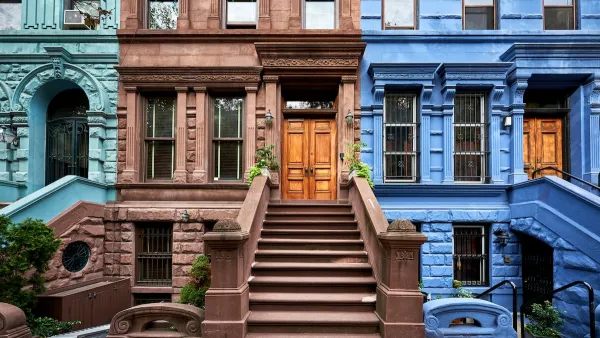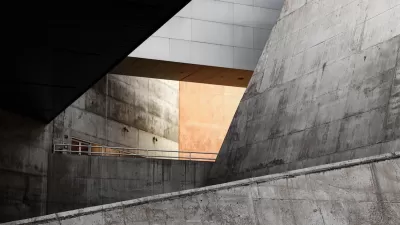"There has been a long-standing thread of recognition that the way people live their lives is directly linked to the designed environments in which they live," writes Dan Lockton, reflecting back on his research.
Lockton gives a detailed overview of research on how the design of a built environment effects, or even controls, the behavior of those who participate in it. Being summarized from his PhD thesis, it inevitably is rich with citations as well as ideas:
"The physical arrangement of elements can be broken down into different aspects of positioning and layout-putting elements in particular places to encourage or discourage people's interaction with them, putting them in people's way to prevent access to somewhere, putting them either side of people to channel or direct them in a particular way (e.g. staggered pedestrian crossings which aim to direct pedestrians to face oncoming traffic; Department for Transport, 1995), hiding them to remove the perception that they are there, splitting elements up or combining them so that they can be used by different numbers of people at once, or angling them so that some actions are easier than others (termed slanty design by Beale (2007), both physically and in metaphorical application in interfaces). Urbanists such as Whyte (1980) have catalogued, in colourful, intricate detail the effects that the layouts and features of built environments have on people's behaviour-why some areas become popular, others not so, with whom, and why, with recommendations for how to improve things, in contrast to work such as Goffman (1963) which focuses on the social contexts of public behaviour in urban environments. "
FULL STORY: Architecture, urbanism, design and behaviour

Planetizen Federal Action Tracker
A weekly monitor of how Trump’s orders and actions are impacting planners and planning in America.

Maui's Vacation Rental Debate Turns Ugly
Verbal attacks, misinformation campaigns and fistfights plague a high-stakes debate to convert thousands of vacation rentals into long-term housing.

Restaurant Patios Were a Pandemic Win — Why Were They so Hard to Keep?
Social distancing requirements and changes in travel patterns prompted cities to pilot new uses for street and sidewalk space. Then it got complicated.

In California Battle of Housing vs. Environment, Housing Just Won
A new state law significantly limits the power of CEQA, an environmental review law that served as a powerful tool for blocking new development.

Boulder Eliminates Parking Minimums Citywide
Officials estimate the cost of building a single underground parking space at up to $100,000.

Orange County, Florida Adopts Largest US “Sprawl Repair” Code
The ‘Orange Code’ seeks to rectify decades of sprawl-inducing, car-oriented development.
Urban Design for Planners 1: Software Tools
This six-course series explores essential urban design concepts using open source software and equips planners with the tools they need to participate fully in the urban design process.
Planning for Universal Design
Learn the tools for implementing Universal Design in planning regulations.
Heyer Gruel & Associates PA
JM Goldson LLC
Custer County Colorado
City of Camden Redevelopment Agency
City of Astoria
Transportation Research & Education Center (TREC) at Portland State University
Jefferson Parish Government
Camden Redevelopment Agency
City of Claremont





























